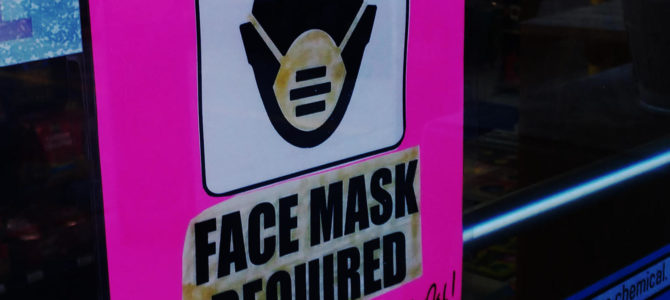
The announcement last month that Dr. Scott Gottlieb will resign as the commissioner of the Food and Drug Administration has widely been seen as a victory for the vaping industry and producers of other alternative nicotine products. His tenure was marked not only by an intransigence towards accepting the health benefits of vaping over smoking, but also some extremely short-sighted policies towards traditional smoking, chief among them the idea of removing nicotine from tobacco.
Ultimately, Gottlieb’s greatest failing was not his zealous championing of nicotine temperance, but his failure to use the tools Congress gave him to help create a comprehensive national approach to tobacco and nicotine products. In this area, his time at the FDA has maintained a deadly status quo, because in helping Americans quit smoking, every day wasted costs lives.
There is little to no doubt that vaping and other alternatives to smoking are less harmful than setting tobacco on fire and inhaling its smoke. Although it is not entirely clear what harmful effects vaping might have, it is clear that it’s better for nicotine users than combustible cigarettes. This suggests a fairly obvious need for the FDA to encourage vaping rather than crack down on it, which all too often was Gottlieb’s approach, but it’s a bit more complicated than that.
Throughout Gottlieb’s tenure, troubling studies emerged about the soaring rates of youth vaping. In December of last year, the surgeon general declared it an “epidemic.” The numbers bear this out. According the New England Journal of Medicine, in 2017, 11 percent of high school seniors vaped. Just a year later, that number jumped to 20 percent. After decades of steep decline in the use of nicotine among kids, these numbers justify concern, but they should not stand in the way of efforts to move adults who smoke away from traditional cigarettes.
Today the challenge that both the FDA and the nicotine industry face is how to balance the need to move adult smokers to less harmful products and to ensure that young people understand the risks of vaping and don’t have access to it. This is not an easy needle to thread, but tools do exist for the FDA to begin to create a plan to do so.
The FDA Toolkit
In 2009, President Obama signed into law the Family Smoking Prevention and Tobacco Control Act. The wide-ranging legislation led to the FDA creating the Center for Tobacco Products (CTP), a branch of the agency charged with implementing the new law. Among the biggest changes brought about by the CTP was creating a Modified Risk Tobacco Product (MRTP) label for less harmful products, potentially including vaping products, which are legally considered tobacco products even though they contain no tobacco.
Last year, I spoke with Dr. Konstantin Farsalinos, a leading expert on smoking cessation and the risks of vaping, about what approaches governments should be taking. He was crystal clear that he felt the best approach was for government to identify less harmful products and to use tax and regulatory regimes to move smokers to those products as quickly as possible.
The MRTP policy opened the door to doing just that. Not only would a successful MRTP application allow producers to advertise their products as less harmful, it also would give states a benchmark against which to create tax rates. In fact, this has already started: both Kentucky and Connecticut have laws on the books that would slash taxes on products that receive the MRTP label, thus encouraging smokers to adopt them.
So far, so good. The only problem is that, a decade later, exactly zero products have been given the label. In fairness, only two companies have tried to navigate the labyrinthine application process for an MRTP. The first was Swedish Match, a company that produces snuss, a kind of tobacco dip in a small pouch that helped slash smoking rates in Sweden. The second is powerhouse Philip Morris International, with IQOS, a heat not burn product. Swedish Match was denied the application, while PMI’s is still pending, and has been for nearly two years.
It is absolutely essential that the new head of the FDA be open to streamlining this process, and even amending it to allow the government to differentiate between products that have drastically different levels of harm. Such an approach will save lives among current smokers. That must clearly be a goal of any FDA approach to regulating nicotine. But that still leaves the question of the alarming rates of youth adoption of vaping.
What About the Kids?
There are two reasons a comprehensive approach to nicotine regulation must provide serious answers to the problem of youth vaping. The first and most important is that we are not certain about the short and long-term effects of vaping, especially among young people, whose bodies are not fully developed. But beyond that, there is a practical concern of whether the public will tolerate increased vaping by kids or demand that vaping face the same severe regulation that traditional cigarettes do, even if it means worse results for adults who smoke. That’s a trade many people will be willing to make.
There are myriad approaches to curbing youth vaping that would all have different effects on the opportunity for adult smokers to switch to vaping. One severe approach would be to limit where vaping products could be purchased to specialized vape stores that would be less likely to sell to kids. The problem here is that the more difficult nicotine alternatives are for adults to buy, the more likely they stay with combustible cigarettes.
Liz Mair, speaking for the vape advocacy group called Vapors United, suggested to me in an interview that parents are responsible for their kid’s vaping. This is abject nonsense that harkens back to the worst practices of old-time tobacco companies. Hardly a worse argument could be made. There are much better ones. Thankfully, Vapors United is open to them.
A more balanced approach would be to increase enforcement and punishment of sales to youth. This is an area where the industry can partner with regulators. This could be done either by the vape industry policing its own retailers, or by creating a pool of funds for a government or independent authority to do so. This kind of good faith effort from the industry, which accepts the real problem of youth vaping, could go a long way to convincing the FDA that they are serious about it.
In addition, the FDA is already engaged in removing sweet flavors from vaping products, which it believes can help stem the problem. This is a question of both what kind of products kids like and one of marketing. Flavors like strawberry and grape may well make the product more attractive to kids. More broadly, the general marketing of alternative tobacco products must avoid targeting kids. Best practices must be developed by regulators and industry in this area.
Innovation Is the Key
Whoever the next commissioner of the FDA is, he or she must be an innovator willing to change the decades-old draconian regulation of all tobacco products. Gottlieb’s reactionary attitude and policies have gotten us nowhere. Adults aren’t switching at rates they could be if encouraged by tax policy, and kids are adopting vaping at an alarming rate. It is the worst of both worlds.
Tobacco became a global product five centuries ago, and there are a billion smokers in the world today. It is absurd to believe that one of the most successful products in the history of the world can simply be wished, or even regulated, away. The fact is, a lot of people enjoy and are addicted to nicotine, and this is not going to change.
In an interview with me last year, Philip Morris’ CEO Andre Calantzapoulus made a somewhat shocking statement about the future of tobacco. Asked if tobacco will ever reach the point where its harm can be compared to things like alcohol and fast food, he didn’t duck the question. He admitted that such a reality may be in the cards in the future, but that such a debate is “premature.”
The next head of the FDA will enter at crossroads for a multi-billion-dollar, half-millennia-old industry that was founded in the United States. His or her responsibility, which Gottlieb punted on, will be to set the country’s regulations for the newly emerging alternatives to smoking. This will require determination, imagination, and courage. More than anything else, these are qualities we need in the next commissioner of the FDA.








